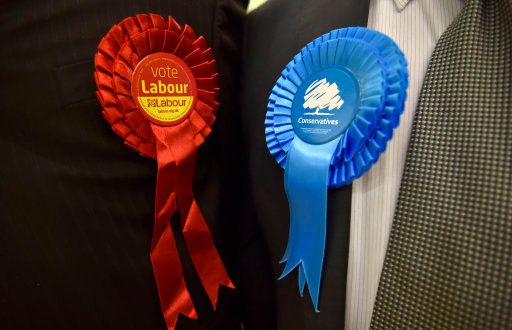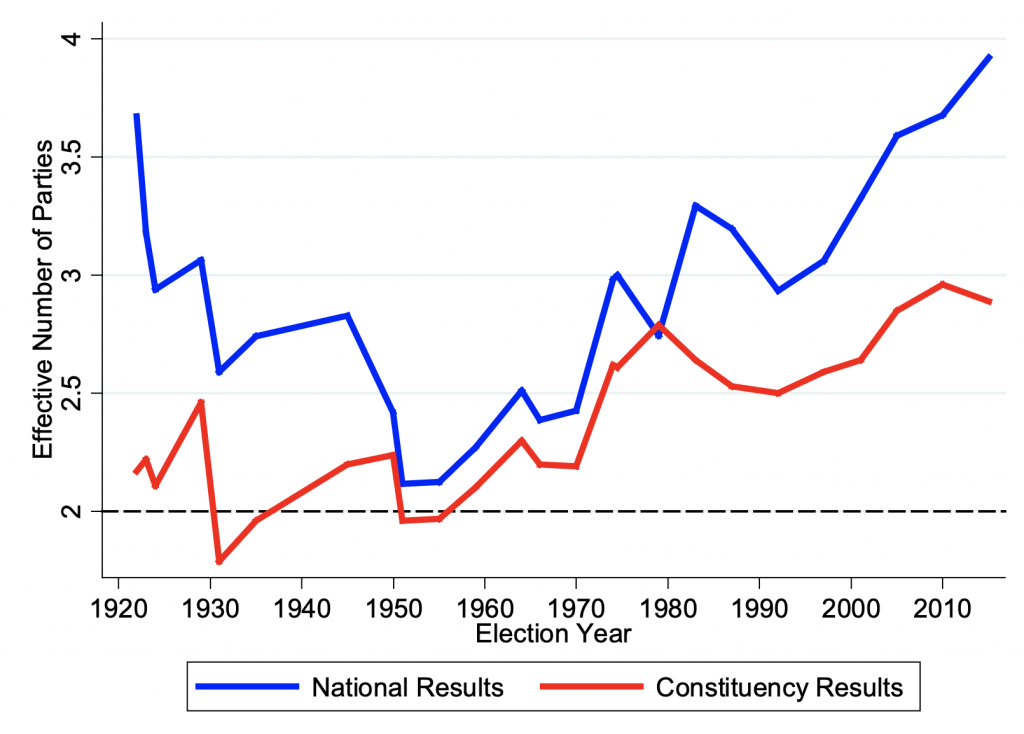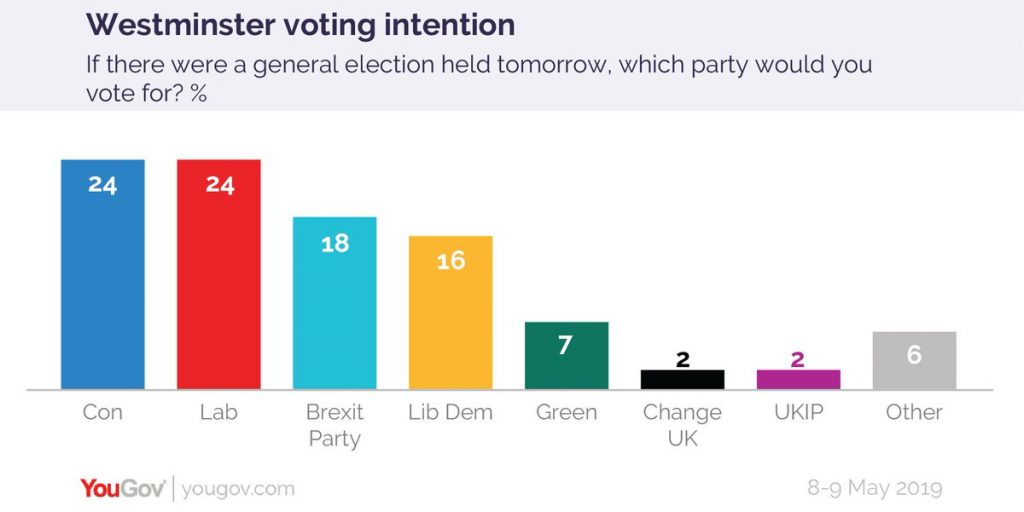Navigating the UK’s Political Landscape: Does the UK have a two-party system?
The question of whether the UK operates under a two-party system is a highly debated topic in today’s day and age amongst social scientists and citizens. When educating students in school, how does one explain the nature of the UK’s political system. Is it right to describe politics in the UK simply as domination by two parties or is it better to explain the UK’s political system as one which is multiparty.

Photo: Hannah McKay/PA Archive/PA Images
A political party is defined as ‘any group, no matter how loosely organised, seeking to elect governmental office-holders under a given label’ (Epstein, 1967:9, as cited in Herrnson, 2009:1208). Th Going back in history, there has been, to a certain degree, an existence of a two-party system in UK politics. Lipson (1953:338) argues that a state has a two-party system if ‘(1) Not more than two parties at any given time have a genuine chance to gain power, (2) One of these is able to win the requisite majority and stay in office without help from a third party, (3) Over a number of decades two parties alternate in power’. Elections in the early days had the Conservatives and Liberals against each other, with the two parties alternating between power of the government. When the Labour Party grew in popularity in the 1920s, the Liberals fell out of public favour. This furthered the idea of a two-party system in the UK amongst commentators as this increase in popularity with Labour overlapped with the demise of the Liberals. . By the 1950s, elections were a two-horse race between the Labour and Conservative Party.

Figure 1 – Share of the vote by party: UK General Elections, 1918 – 2019 (Cracknell et al., 2023)
From 1970 onwards, one can see the rise of a third party again, the Liberal Democrats. One can see from Figure 1 above that in the modern day, elections are much more fragmented than those previously in the early years of the 20th century. Where previously the Labour and Conservative parties accounted for 90% of the votes in the 1950s, more recently they have not been as dominant. From 1997 onwards other parties have emerged to prominence, including the UK Independence Party (UKIP), the Green Party and Democratic Unionist Party (DUP). The emergence of other parties in the elections has made the UK political system more multipartisan in character than previously. The notion of a two party system can be disregarded, and the notion of a multipartisan system is much more suited when navigating the UK’s political landscape.

Figure 2 – Two Measures of Party System Fragmentation over time (Raymond, 2016)
In figure 2, both the national and constituency results display how the existence of a two party system can be viewed as non-existent. The multipartisan character of the UK’s political system can be seen in the latter stage of the graph at the national level, whereby the number of parties is just under four. At the constituency level, there are just under three parties involved. Furthermore, figure 3 displays the voting intentions of the public. This showed the lowest total of the two main parties with just 48% support. The chief executive of the Electoral Reform Society (ERS), Darren Hughes (2019), said ‘a fundamental political shift has taken place in Britain’, with the voters being ‘less closely aligned with the big two parties’ and ‘supporting a wider range of parties’. Looking at this, it is clear to see how a multiparty system exists in the UK as voters are moving away from the big two parties and exploring different parties to deliver for them.

Figure 3 – Westminster voting intention (YouGov, 2019)
So why is there still dominance by Labour Party and the Conservatives? The framework of the UK’s ‘First Past the Post’ system makes it more difficult for the smaller parties to gain popularity. Additionally, many people view voting either Conservative or Labour as the only viable options as the others are simply not good enough. . Pairing this idea with a poll which shows that a number of individuals feel that their vote does not matter, and it is clear to see why there is still two-party dominance.
To conclude, the UK’s political system is certainly multi partisan. Whilst this is not evident in results from election, public opinion in polls as shown above says otherwise. Nonetheless, the two-party system most definitely still exists and has an influence and sway on the UK’s political actions.
Bibliography:
Cracknell, R., Uberoi, E. and Burton, M. (2023) UK election statistics: 1918-2021: A century of elections , House of Commons Library Home. Available at: https://commonslibrary.parliament.uk/research-briefings/cbp-7529/ (Accessed: 04 March 2024).
Herrnson, P.S. (2009) ‘The roles of party organizations, party-connected committees, and party allies in elections’, The Journal of Politics, 71(4), pp. 1207–1224. doi:10.1017/s0022381609990065.
Hughes, D. (2019) Shock Westminster polls reflect ‘long term shift’ to multi-party politics, say experts, Electoral Reform Society (ERS). Available at: https://www.electoral-reform.org.uk/latest-news-and-research/media-centre/press-releases/shock-westminster-polls-reflect-long-term-shift-to-multi-party-politics-say-experts/ (Accessed: 03 March 2024).
Lipson, L. (1953) ‘The two-party system in British politics’, American Political Science Review, 47(2), pp. 337–358. doi:10.2307/1952027.
Raymond, C. (2016) Why British politics is not a two-Party system. Available at: https://pure.qub.ac.uk/files/107735631/The_United_Kingdom_is_Not_a_Two_Party_System.pdf (Accessed: 03 March 2024).
YouGov (2019) Voting intention: Conservatives 24%, labour 24% (8-9 may), YouGov. Available at: https://yougov.co.uk/politics/articles/23294-voting-intention-conservatives-24-labour-24-8-9-ma?utm_source=twitter&utm_medium=website_article&utm_campaign=VI_9_May_2019&redirect_from=%2Ftopics%2Fpolitics%2Farticles-reports%2F2019%2F05%2F13%2Fvoting-intention-conservatives-24-labour-24-8-9-ma (Accessed: 03 March 2024).
The Blog post analyses the question whilst providing the necessary Historical context to suggest that the UK has largely operated within a two-party system, whilst also recognising the unfolding nature of 3rd parties. However, an additional topic which the blog could explore is the role of the current electoral system and how this contributes to the two-party nature in the UK and helps reinforce it. This could also be carried out through the analysis of various other electoral systems that have been introduced and their effectiveness in practice. There is an effective use of tables and polls throughout the blog post which adds further evidence to the argument. The author appreciates in the conclusion that this support for emerging parties should not necessarily be measured purely through election results but rather public opinion polls which I think should be commended.
Overall, this is a well-detailed blog post that offers an alternative approach to the suggestion that the UK operates in a two-party system.
O conteúdo existente nesta página é realmente notável para a experiência das pessoas,